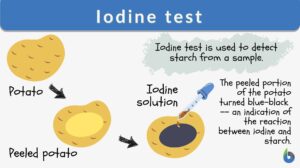Search Results for: t tube
Facultative anaerobe
Facultative Anaerobe Definition What does facultative anaerobe mean? Facultative organisms are the most adaptable... Read More
Sieve-tube element
Definition noun, plural: sieve tube elements A specialized type of sclerenchyma cell that forms a sieve tube of... Read More
Elastic cartilage
The cartilage is a connective tissue characterized by having an extracellular matrix that is abundant in chondroitin sulfate... Read More
Sieve tube
Definition noun, plural: sieve tubes (botany) Any of the tubes in the phloem comprised of cells joined end-to-end through... Read More
Thistle tube
Definition noun A piece of glassware used in laboratory that consists of tube with funnel-like portion at the top and a... Read More
Aerotolerant
Aerotolerant Definition The term "aerotolerant" pertains to an organism that does not require oxygen for growth but can... Read More
Anaerobic bacteria
Bacteria are classified according to the need for oxygen to survive and grow. For example, aerobic bacteria are bacteria... Read More
Seed Plants
There are two main subdivisions of seed plants—the ones without covered seeds, the gymnosperms, and the ones with covered... Read More
Pollen Grain
What are Pollen Grains? Plants are unique structures and so they carry out mechanisms in special ways. Fertilization in... Read More
Iodine test
Iodine Test Definition The iodine test is a chemical reaction-based identification test for starch. In this test, iodine... Read More
Plant Tissues
Plants are composed of three major organ groups: roots, stems, and leaves. As we know from other areas of biology, these... Read More
Crown of head
Crown of Head Definition The crown of the head is the upper dorsal part (or area) of the head. Several creatures have... Read More
Biuret test
In this article we will answer the following three questions: What is a Biuret Test? What does biuret test for? What is... Read More
Packed cell volume
Definition noun The proportion of blood occupied by red blood cells, usually expressed as a percentage of the total blood... Read More
Hyaline cartilage
Hyaline Cartilage Definition Before we define hyaline cartilage, let us understand what cartilage is. What is cartilage? Is... Read More
Fahraeus-lindqvist effect
Fahraeus-lindqvist effect The decrease in apparent viscosity that occurs when a suspension, such as blood, is made to flow... Read More
Lamina ventralis
Lamina ventralis --> basal lamina of neural tube The ventral division of the lateral walls of the neural tube in the embryo;... Read More
Conjugation
Conjugation generally means the joining or coming together (union), such as in certain unicellular organisms (some bacteria,... Read More
Peristalsis
What is Peristalsis? Peristalsis is the series of involuntary, wave-like muscle movements in the cylindrical, hollow tube... Read More
Companion cell
Definition noun (botany) Any of the metabolically-active parenchyma cells associated with a sieve tube element in the phloem... Read More
Obligate aerobe
Before we define obligate aerobes, let us first understand and define aerobic organisms. Aerobic organisms are those that... Read More
Sieve element
Definition noun (botany) A food-conducting cell in the phloem of vascular plants Supplement The phloem is the vascular... Read More
Human Reproduction
Terminology and Concepts Primary reproductive organs are called gonads - testes in the male and ovaries in the female.... Read More
Nematocyst
All organisms are composed of millions of cells. Many cells serve specific purposes and are specialized to do distinct... Read More
Sieve plate
Definition noun, plural: sieve plates The perforated transverse wall between two sieve elements in vascular plants... Read More
Capillary action
Definition noun The movement of a liquid, e.g. water molecules, through a narrow space as a result of cohesion, adhesion,... Read More
Follicle-stimulating hormone
Follicle Stimulating Hormone Definition In the pituitary gland of the brain, gonadotropic hormones are released.... Read More
Cytopharynx
Definition noun, plural: cytopharynxes or cytopharynges The tube-like passageway in certain protozoans through which the... Read More
Fallopian tube
Fallopian tube (Science: anatomy) The paired tubes which connect the ovaries to the uterus and conduct the egg to the... Read More
Basal lamina
Definition noun (histology) A layer of extracellular matrix found on the basal surface of epithelial cells, and which is... Read More






















